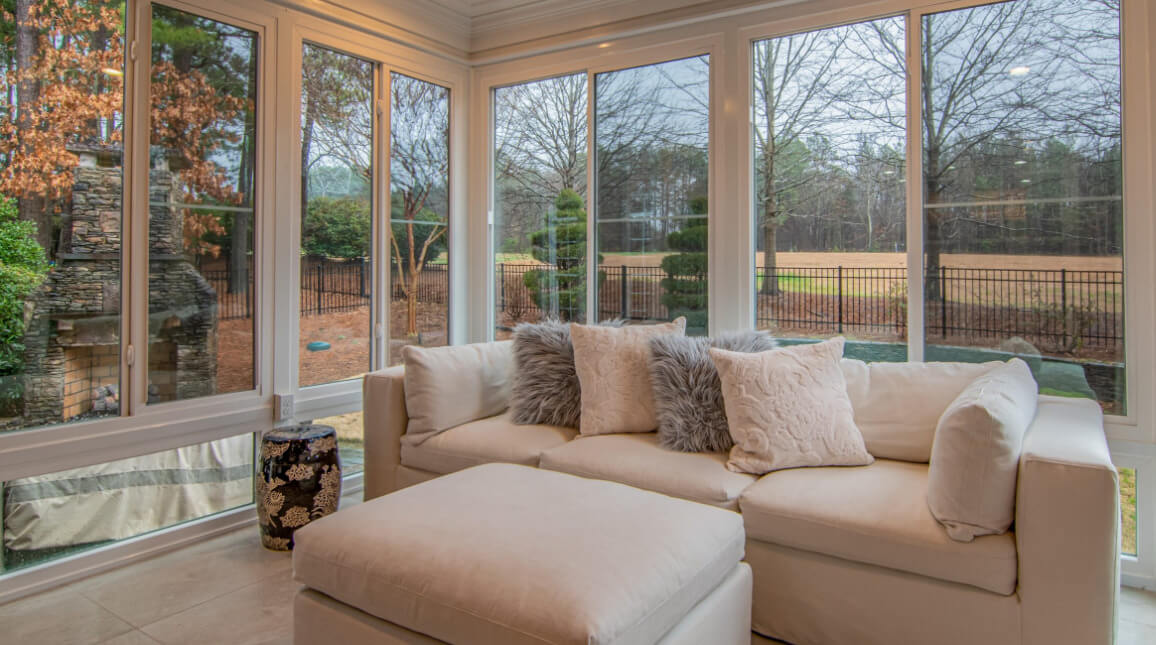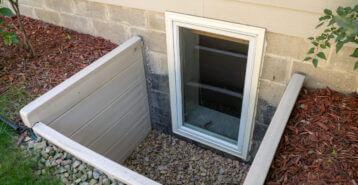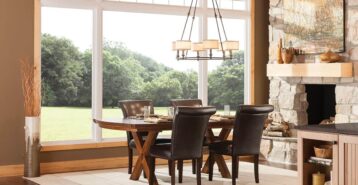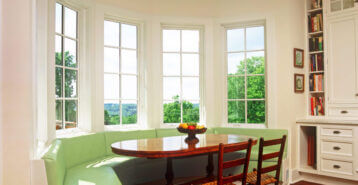What Are Floor-to-Ceiling Windows?
Just as the name says, floor-to-ceiling windows stretch from the ceiling all the way to the floor. They make for a stunning home improvement, but floor-to-ceiling windows cost more than many other types of window replacements. So how do you know if this is a good project for you? This guide will break down the pros, cons, and costs.
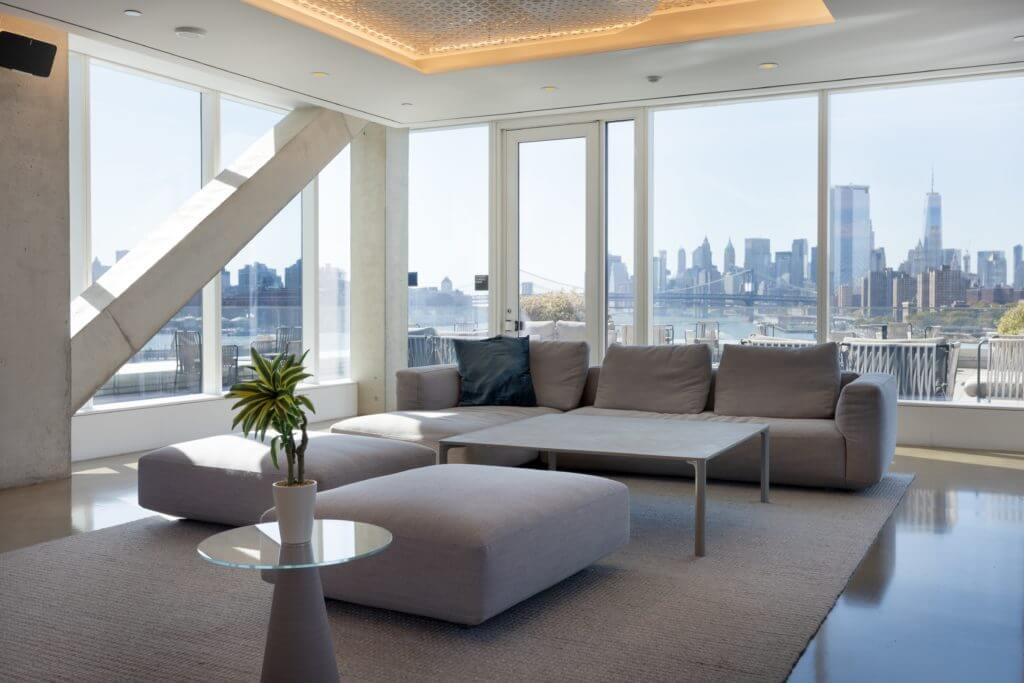
To start, there are many variations in what these windows can look like. They can be:
- One large piece of glass
- Many different windows arranged to cover a wall, sometime even in a variety of sizes
- Inoperable and installed simply for the aesthetic effect
- Able to be opened and shut like a regular window
This style falls into the category of a “custom window.” That means instead of coming in standard sizes, a window contractor will custom-order windows to fit your space. If you want floor-to-ceiling windows in a room with standard eight- or 10-foot ceilings, the job may be less customized, and therefore, less expensive. However, many homeowners are interested in this having this window style in an especially tall space. That would requite more customization and likely come at a higher price.
Sometimes, this window style is also simply called a “window wall” or described as a “wall of windows.”
How Expensive Are Floor-to-Ceiling Windows?
These windows are significantly more expensive than a typical replacement window. Floor-to-ceiling windows cost between $700 – $1,600 per linear foot.
Why the wide range in price? Well, since you are replacing an insulated wall with glass, there are a number of factors to consider, all of which can add to the price:
- What region do you live in? An area with extreme heat or cold will need more insulation for a window wall than a region with temperate weather. Triple-glazed glass is more expensive than double-glazed glass. Glass with gas infills is further insulating, but also more expensive.
- How large is the wall you want to replace with windows? An especially long wall, a curved wall, or a wall with a corner will all be more expensive.
- What type of frame will you need? You may want a higher-quality, better-insulated frame to ensure you don’t experience too much heat/air-conditioning loss.
- Do you want the windows to open? Inoperable windows are less expensive than windows with moving parts.
Since this is a custom job, the only way to get an exact quote is to contact a contractor. Click below to be matched with up to four contractors in your area.
Are Floor-to-Ceiling Windows a Good Idea?
Floor-to-ceiling windows are an expensive home improvement, so be sure the upsides and downsides are in line with your expectations.
-
Pros
- Unique and beautiful
- Offer lots of light
- Can change the look and feel of a room
-
Cons
- High potential for energy loss
- Not conducive to privacy
- Demolition and construction needed
Pros
In addition to being beautiful, a window wall also provides the following:
- Unique home addition. Depending on where you live and what the real estate market there is like, this could translate into a high ROI for this project. A local real estate agent may be able to tell you how they expect a home improvement like this one to sell. Though unless you plan to sell your home shortly, they may not be able to tell you what the market for a window wall will be down the road.
- Maximizes light and views. This is one of the top reasons homeowners are interested in this window type. If you have a view you love or want the flood of natural light, then floor-to-ceiling windows are a good project for you.
- Changes the look and feel of a room. From making a room feel bigger to making it feel an architectural focal point, floor-to-ceiling windows can completely change the room they’re in.
Cons
There are disadvantages to be aware of with this window type, particularly associated with cost.
- Energy loss. Windows and doors make up the majority of a home’s energy loss. That means those are the number one areas where conditioned air gets out and/or the elements get in. With such a large amount of glass, you will need to invest in insulation. This means you may need more expensive frames, like fiberglass, more expensive glass, like triple-glazed, and window treatments, like thermal curtains. All of this adds to the expense of the project. Without that investment in proper insulation, expect to see an increase in your energy bills. The room will also not be as comfortable a temperature as the rest of your home.
- Privacy. Yes, you will be able to see a much wider view of the world outside your window. But that means more of the world will be able to see you, too. If you live somewhere with neighbors or pedestrian traffic close-by, you may need to spend more on a privacy glass solution, like tinted or mirrored glass.
- More demolition and construction required. You are not simply getting a replacement window here. You will need to completely replace a wall. Depending on what’s inside the wall you want to install floor-to-ceiling windows on, you may need to reroute pipes or electrical wiring. You also may need to add additional structural support to the wall in order to accommodate the windows. Again, this all comes at a cost.
Frequently Asked Questions

What are floor-to-ceiling windows called?
Floor-to-ceiling windows are also called “window walls.” As the name implies, this window style/type is often used to create a full wall of windows. However, you can also add just a couple to a room to maximize light and take advantage of your views. A full wall of floor-to-ceiling windows will involve significantly more construction, time, and cost than adding a select number to a room.
Are floor-to-ceiling windows more expensive than other types of windows?
Yes, they are. Just how much more expensive depends on several factors:
- Are you adding them to a new house or replacing existing windows? A new build home will not have the added cost of demolition and any needed reconstruction to accommodate a wall of windows.
- How many floor-to-ceiling windows are you adding? Replacing two existing single-hung windows with two floor-to-ceiling windows will involve less demolition, less reconstruction, and less glass than replacing a whole wall with windows.
- What type of glass do you need? Floor-to-ceiling windows let in tons of light, but that also means tons of heat or cold. Depending on your region and which direction your windows face, you may need triple-glazed windows or low-e glass.
How do I know if my home is a good candidate for floor-to-ceiling windows?
Unless you know where the load-bearing joists in your walls are, you will need a contractor to come out and help you identify which areas of your home can accommodate floor-to-ceiling windows.
Are Floor-to-Ceiling Windows Worth It?
Floor-to-ceiling windows are a stunning addition to almost any home. If you have the budget for the project and privacy is not a particular concern, then the only other thing to prepare for is stocking up on glass cleaner.
A window professional can walk you through any special considerations you may need to consider for your specific home.
